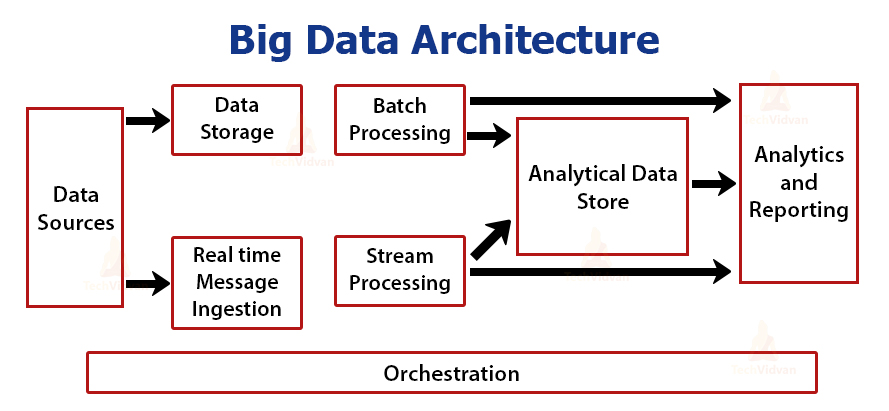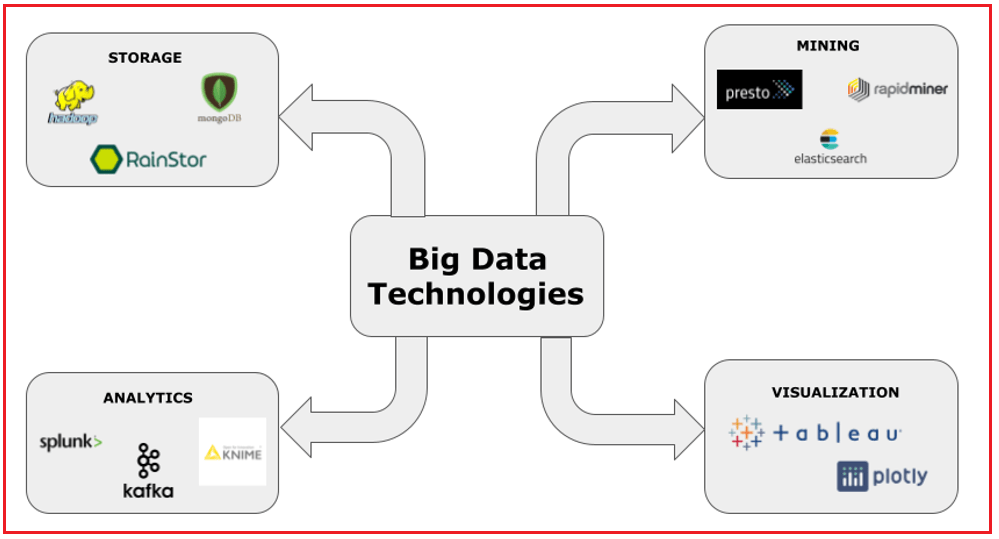What is Big Data Architecture?
Big Data Architecture is the framework that handles huge amounts of data. It allows for the collection, storage, and analysis of this data. Think of it as a blueprint that guides how data flows from its source to meaningful insights.
Importance of Big Data Architecture
Big Data Architecture is crucial for making sense of large data sets. Without it, data would be chaotic and hard to use. It helps businesses understand trends and patterns. This leads to better decisions and new opportunities.

Who Uses Big Data Architecture?
Big data architecture powers industries from healthcare to finance, employing data scientists to uncover insights and data engineers to design and maintain infrastructure.
Industries Leveraging Big Data
Big data architecture transforms operations across diverse sectors, not limited to tech.
Industries, including healthcare, finance, retail, and manufacturing, benefit from its application.
Analyzing patient data for healthcare, optimizing financial investments, and streamlining supply chains highlight its ubiquitous presence.
Key Stakeholders
Big data relies on key players who bring crucial skills to the table, forming a solid team.
Data scientists act as modern-day problem solvers, using their expertise to uncover valuable insights buried within huge amounts of data.
Data engineers are the masterminds behind the scenes, designing and building the systems that handle and make sense of all that information.
Roles and Responsibilities
In the world of big data, everyone has a role to play. It's like a well-oiled machine, with each part working together to keep things running smoothly.
Data scientists analyze data and extract valuable insights that drive business decisions.
On the other hand, data engineers are responsible for building and maintaining the infrastructure supporting big data operations.
What Are the Main Components of Big Data?
Big data processing architecture encompasses storage, processing, analysis, visualization, and security, ensuring vast amounts of data are efficiently managed, analyzed, and protected to derive valuable insights and drive informed decisions.

Storage
Big data needs a big place to stay. It's like having a massive warehouse where you store all kinds of stuff, but instead of physical items, it's all data. This is where the magic begins.
Think of it as a giant bookshelf, but you have hard drives, servers, and other fancy tech stuff instead of books.
The key here is to have enough space to store all the data coming in and to organize it so that it is easy to find later.
Processing
Now that you have all this data sitting in your warehouse, what do you do with it? You need a way to make sense of it all. That's where processing comes in.
Imagine having a team of super-fast readers who can scan through millions of pages in seconds. That's what processing does with data.
It's like having a giant brain that can crunch numbers, analyze patterns, and extract valuable insights from all the information stored in your warehouse.
Analysis
Analysis within big data analytics architecture involves a systematic approach to uncovering hidden trends and identifying potential issues.
The goal is to connect the dots and decipher the narrative behind the data.
Ultimately, the insights derived enable informed decision-making and strategic planning.
Visualization
Now that you've uncovered all these insights, how do you share them with others? That's where visualization comes in.
Imagine turning all those numbers and charts into colorful graphs, interactive maps, and stunning visuals that anyone can understand at a glance.
Within the architecture of big data, visualization transforms complex data sets into intuitive and accessible visual formats, making it easier for users to grasp the trends and insights.
Security
Security is a critical component in the architecture of big data, ensuring valuable information remains safe and secure.
It's like having highly trained guards protecting your data warehouse 24/7, preventing unauthorized access and theft.
Effective security practices safeguard sensitive information, prevent data breaches, and maintain the trust of customers and stakeholders.
Suggested Reading : 5 V's of Big Data
Technologies Used in Big Data Architecture
Technologies used in big data architecture, such as Hadoop, Spark, and NoSQL databases, provide robust solutions for storing, processing, and analyzing massive datasets efficiently.

Hadoop
Big data needs a big solution, and Hadoop is one of the biggest names in town. It's like the Swiss Army knife of big data, with all the tools you need to store, process, and analyze massive amounts of information.
Hadoop works by breaking down big tasks into smaller chunks and spreading them out across a network of computers. It's like having a team of workers collaborating to get the job done faster.
Spark
Spark is essential for real-time big data processing, significantly boosting your processing power to handle large datasets at high speed.
By keeping data in memory rather than writing it to disk, Spark operates much faster than traditional systems, ensuring continuous and efficient performance.
NoSQL Databases
In the world of big data, not all data is created equal. That's where NoSQL databases come into play. They're like specialized storage solutions designed to handle all kinds of data, from structured to semi-structured and unstructured.
NoSQL databases are highly scalable and flexible, allowing you to store and retrieve data in ways that traditional relational databases can't match.
Suggested Reading: Communication Protocols in IOT
Frequently Asked Questions(FAQs)
What is Big Data Architecture?
Big Data Architecture refers to the framework for ingesting, processing, storing, and analyzing massive volumes of data to extract insights and value.
How does Big Data Architecture differ from traditional data storage?
It manages larger, more complex, and rapidly changing data sets, often in distributed environments, unlike traditional systems, which handle less volume and variety in a centralized manner.
What are the main components of Big Data Architecture?
Core components include data sources, data storage, data processing engines, analytics tools, visualization platforms, and data governance mechanisms.
Why is scalability important in Big Data Architecture?
Scalability ensures the architecture can handle the exponential growth of data volume, velocity, and variety without performance degradation.
How do real-time analytics integrate with Big Data Architecture?
Real-time analytics are embedded within the architecture to process and analyze data as it arrives, enabling immediate insights and decision-making.
